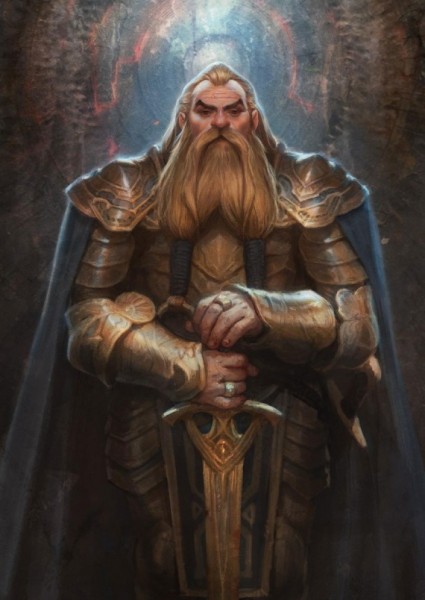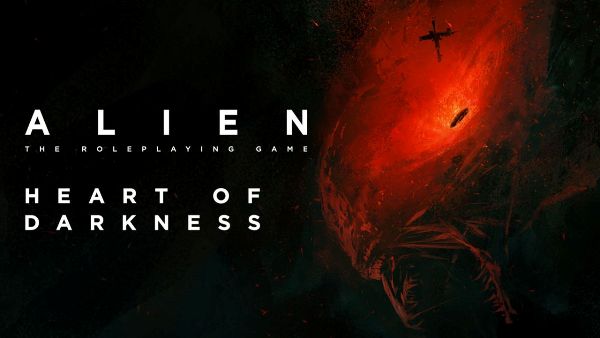Racial Limitations
By The Warden

I’d like to talk about dwarves for a moment. I love these bastards and one of the things I love about them is that they’d call themselves bastards to their face while clinking two mugs of ale together in cheer. I’ve always appreciated dwarves and while I adore John Rhys-Davies’ performance as Gimli, it would have been nice for the dwarf to be more than comic relief. Most of all, I’m geeking out to see The Hobbit because it’s nothing but dwarves! It was treat enough to see the dwarves in Snow White & the Huntsman (I’d completely forgotten there were dwarves in the original story and actually clapped my hands in the theatre when these eight literally popped up). And I’m not the only one, as dwarves have endeared themselves to many a gamer over many a generation.
Mechanically, however, we don’t seem to think much of dwarves. They fit a very specific stereotype and we expect no less of them, perhaps even become disappointed when they don’t meet our expectations. Is that why dwarves are pretty much the same across the board? Not just within a genre of fantasy games, but within every individual game. It seems to happen with all the non-human races and came to mind while reading the rules for a new RPG. Not to say that game did it wrong or was an extreme example of a trend, just that it occurred to me while reading these particular benefits and could have happened reading any other game that night.
RACIAL PROFILING
Non-human races have traditionally been held back to a specific skill set, racial ability, appearances, and heritage, all of which are crucial to presenting the concept of a non-human race. Along the way, these mechanics have shaped out definition of the races across the board and instead of using them as guidelines or building blocks, we have instead piled more specifics than should be reasonable for a wise, ancient culture as elves, for example. Some games specifically assign weapon training, skill bonuses, strengths and weaknesses to particular enemies, even class restrictions. Games are built with an exact representation of these races written in stone. If it changes in the slightest, they become a sub-race. In other words, if you want dwarves to live on the surface, they’re called hill dwarves and you’re regular dwarves are left intact. Nothing to worry about, die hard fans.
Humans, mechanically as a race in a roleplaying game, have gone through two design phases over the years. At first, they were the primary colour of the racial rainbow. There was nothing particularly special about them and the game was built assuming humans as a basis for ability and cultural bonuses. Non-humans, on the other hand, could see in the dark, were naturally good with a bow, could enshroud themselves in darkness a couple of times per day, or happened to be 10′ tall with the strength of an enraged bull. They were fantastic creations above and beyond the scope of ordinary humans. If there was any trade-off, it’s that early generation non-humans were restricted in some way from reaching the game’s full potential because of a level limitation or choosing the race was the same as choosing a class. A dwarven fighter could never become as good as a human fighter, but a human has screwed if he had to fight in the dark. It was considered a fair trade.
Within the 1990s (at least from my perspective), humans rose up to become a significant choice as a race and not just a great class option. Designers began to think of humans as being more than just the default population in a world and wanted to find a way to mechanically describe a great trait of humanity – what genetically defines us as a species? Games began to provide bonuses to the human race, most commonly tapped as their versatility and flexibility. The first time I ever saw this was the human race in Earthdawn with the Versatility talent allowing them to learn any talent from another circle (or class). Humans finally had some pride to step up alongside the non-human races, while our dwarves, elves, and halflings remained the same.
Before going any further, we do have to acknowledge many races have undergone significant revisions and adaptations over the years. Many games have their own version of trolls, goblins, and minotaur, producing them as popular player character races when they were once stuck as villains. Gnomes have seen the most facelifting recently as designers work hard to revise these creatures from their pudgy, garden-based variety. Today’s post highlights the traditional presentation of the original non-humans: dwarves, elves, and halflings.
HOW CAN YOU BE FIRST LEVEL AND IMMORTAL?
It feels as if non-humans are being held back as a dynamic culture and relegated to simple add-ons. A Human 2.0, if you will. There are many crucial aspects of these races that have never made sense to me. Elves, for example, are typically expected to live for hundreds of years or are immortal or near-immortal creatures… yet no one’s ever seen a D&D level 40 elf in action. The best representation of an elf I’ve ever seen was Legolas in the Lord of the Rings trilogy. With hundreds of years practising, he simply could not miss and could still kill a guy when someone knock his bow slightly off course. Mechanically, this is an impossible and unnecessary feature for players to use unless every player has an elf and they’re going up against nothing but other elves. It would also be boring. To avoid this conundrum, we can only play young elves. Oh, and they mature very slowly. What’s the point of living for 800 years if you can only appreciate 150 of them? If dwarves are considered great crafters of metal and stone, why is their Charisma score average?
Culturally, non-humans are non-sensical stereotypes. Dwarves are underground miners, elves are wise creature kin to nature, and halflings have sticky fingers. It’s the primary reason why I’ve enjoyed John Wick’s work at revising the core races in D&D/Pathfinder (http://johnwickpresents.com/wicked-fantasy/). During the old Open Design Podcast, I can recall Mr. Wick expressing his befuddlement of halflings growing up as a culture of thieves while still co-existing alongside the others without being wiped out or institutionalized.
The catch to all this is that everything I’ve just dumped on about non-human races is exactly what makes them perfect for roleplaying games. The faster we understand the concept and intention behind a race, the sooner we can get down to playing them and enjoying them. When you’re young and have all the time in the world, you’re still learning those standards and expectations. Once you become old enough to question and desire something new from your races, your playing time is limited and there isn’t enough gaming on your plate to bother satiating your appetite. You take what’s there and make the most of it with the time available. Inserting roleplaying moments into your actions can help express your character, but the mechanical benefits (darkvision, attack bonuses against specific creatures, etc.) always make them stand out. And there’s nothing wrong with that because it works.
FREEDOM… OR THE USUAL?
It would be difficult – not impossible, mind you – to create mechanics for a truly living and expansive race of humanoids. Where elves are elves, no matter where they’re from and each hails their own talents and specialties and still be referred to as an elf. Perhaps some elves have a tendency to work out, pump iron, and build themselves into toned, giant brute warriors. Why not? Some of this may seem overblown and out of proportion, I know, but it does seem to be a great possibility with new RPGs.
There are many independent systems on the market integrating story game elements into their framework without any fantasy connections. Character generation involves deciding on keywords best describing certain attributes for bonuses to any otherwise plain dice roll. Take those mechanics and allow players to make up their own version of a non-human race without restrictions or expectations, what would you come up with? Perhaps something simpler with our current non-human RPG. If you had a chance to put a +2 bonus (or any equivalent suitable to your system of choice) to any aspect of your non-human character, would it be on the usual choice or something a little different?


